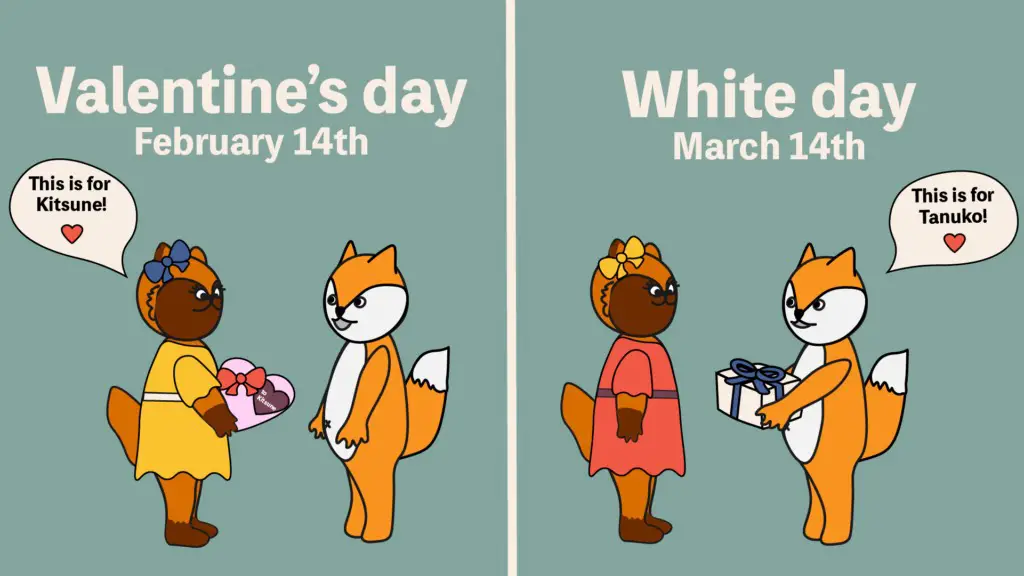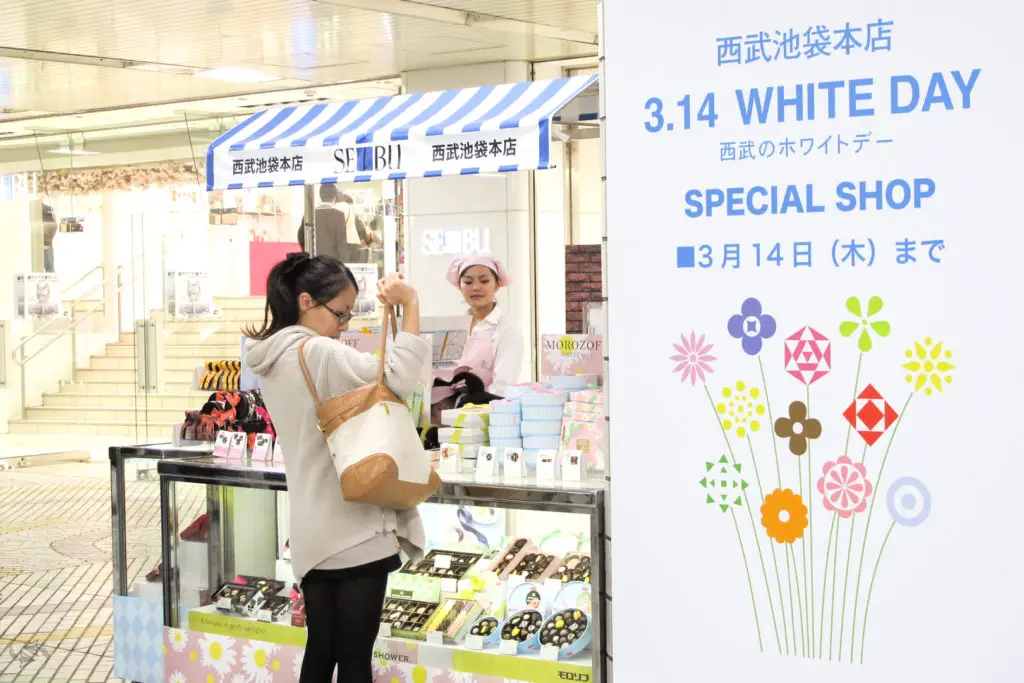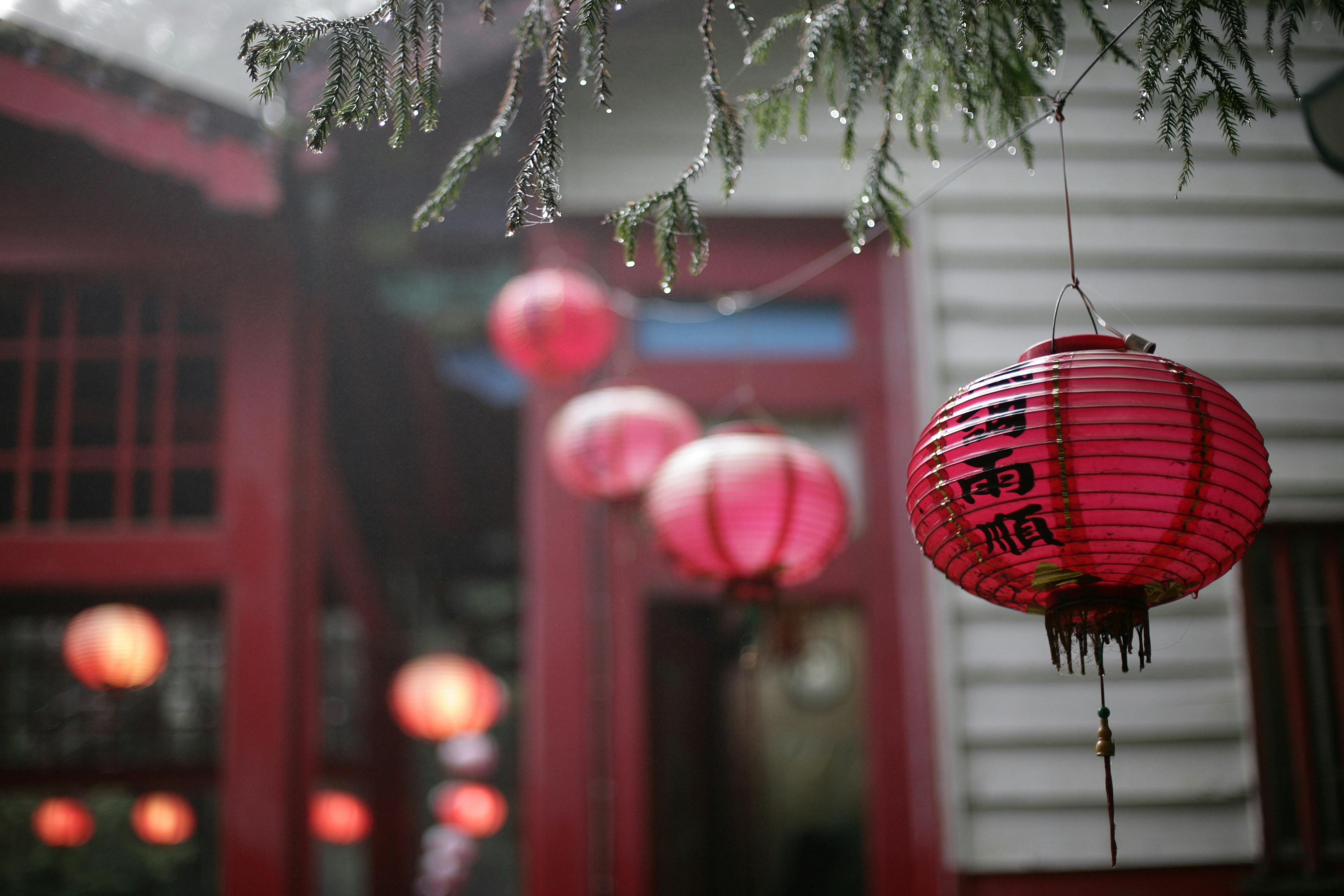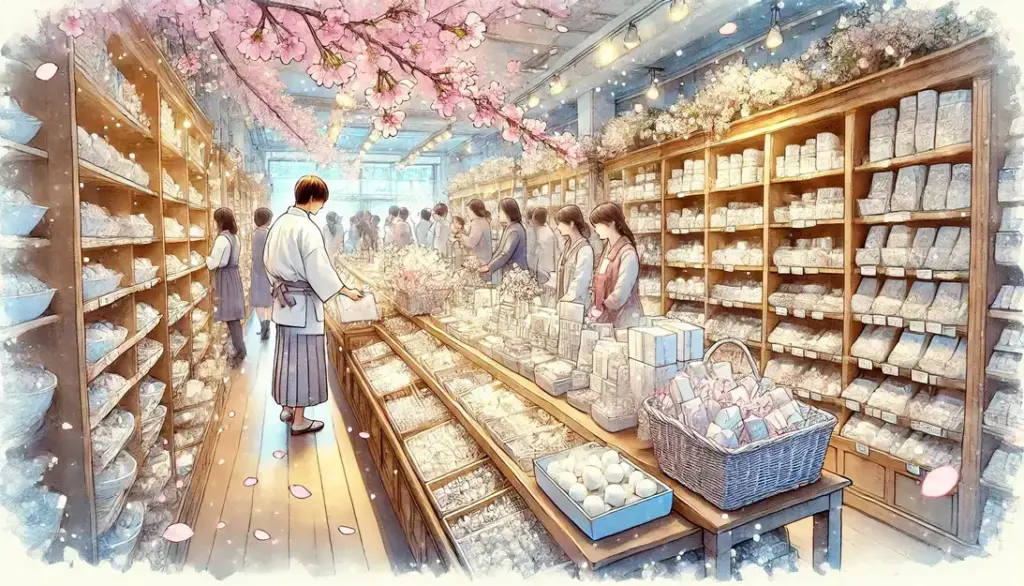On March 14th, one month after Valentine’s Day, Japan celebrates White Day, a unique tradition of reciprocation. Unlike Valentine’s, where women often give gifts, White Day focuses on men returning the favor. This cultural exchange highlights gratitude and thoughtfulness, often expressed through sweets, accessories, or other gifts. Rooted in Japanese customs since 1978, the day carries a blend of romance, friendship, and social harmony, offering a glimpse into Japan’s charming gift-giving traditions. Whether you’re visiting or simply curious, White Day showcases the art of thoughtful generosity.
What is White Day?
White Day in Japan stands out as a special occasion for reciprocating Valentine’s Day sentiments. It’s celebrated exactly one month after Valentine’s, where men express their gratitude through thoughtful gifts. Let’s explore the traditions and origins behind this unique holiday.
The History of White Day
White Day began in 1978, thanks to a push from Japan’s confectionery industry. Initially called “Marshmallow Day,” it was inspired by the growing popularity of Valentine’s Day in the country. Ishimura Manseido, a confectionery company, introduced the idea of men returning gifts on March 14th. Over time, the campaign gained traction, evolving into a nationwide celebration.
Another major contributor was the National Confectionery Industry Association. Their marketing aimed to promote sweets as the ideal “thank-you” gift. Seeing how a marketing strategy has become an entrenched cultural tradition today is fascinating.

Why March 14th?
Why is White Day celebrated exactly one month after Valentine’s Day? The answer lies in its design as a counterpart to Valentine’s. February 14th is when women traditionally give chocolates to men. White Day, on March 14th, allows men to return the gesture. The gap of one month symbolizes thoughtfulness and care, ensuring that the reciprocation is well-considered.
This date was chosen not only for its link to Valentine’s Day but also because it fits nicely into Japan’s gift-giving culture. It reflects the idea of balance and reciprocity—a cornerstone of many Japanese traditions. Learn more about the significance of March 14th here.
The Meaning Behind the Name
The name “White Day” carries a symbolic touch. White represents purity, honesty, and simplicity—values closely tied to the gifts exchanged on this day. Many opt for white-themed gifts like marshmallows, white chocolates, or even white-colored accessories.
Interestingly, the choice of “white” also ties into the holiday’s origins. According to Forbes, the first gifts promoted during early White Day campaigns included white confections. Over time, this theme became synonymous with the day itself.
How White Day is Celebrated
White Day in Japan is more than just a day for gifting; it’s about reciprocity, balance, and heartfelt appreciation. Like Valentine’s Day, tradition plays a critical role, but the customs and expectations are uniquely Japanese. Let’s dive into how White Day is celebrated through gifts, meanings, and activities.
Gift Giving and ‘Sanbai Gaeshi’
At the heart of White Day is the custom of gift-giving. It’s not just about matching effort but going beyond it. The concept of ‘Sanbai Gaeshi’, or the “triple return,” emphasizes that gifts on White Day should be worth at least three times the value of what was given on Valentine’s Day.
This principle fosters thoughtfulness and communicates gratitude. For example, if a woman gifted handmade chocolates on February 14th, on March 14th, her male counterpart is expected to give something equally meaningful—perhaps an accessory or fine treats. The “triple return” reinforces respect and relationship appreciation, reflecting Japanese cultural ideals.
Gifting isn’t just an obligation; it’s about showing that someone has put in time and thought. This transforms White Day into a symbolic gesture of care and acknowledgment.

Popular White Day Gifts
Wondering what people commonly exchange on White Day? Here’s a list of traditional gifts and their significance:
- White Chocolate: Symbolizes purity and simplicity; a staple choice for White Day.
- Marshmallows: Soft and sweet, these were once the original White Day gifts.
- Cookies: Denote a casual or friendly sentiment—perfect for coworkers or acquaintances.
- Jewelry or Small Accessories: Often given between romantic partners, these gifts elevate the exchange to a deeply personal level.
While sweets are the most popular, each gift carries its unique meaning, so the choice often reflects the relationship’s depth. Check out more popular White Day gifts.
Romantic vs. Obligation Gifts
White Day gifts fall into two categories: romantic and obligation. Romantic gifts are for significant others and express love and devotion. Obligation gifts, or ‘Giri’, are commonly exchanged with coworkers or friends to maintain social harmony.
- Romantic Gifts: These are elaborate and thoughtful, showcasing effort. Jewelry, luxury sweets, or even flowers often make their way into this category.
- Obligation Gifts: Simpler but equally sincere, these gifts could include individually packaged snacks or treats like cookies and candies.
The emphasis is placed on who receives the gift. A coworker might get a polite thank-you present, while a girlfriend or wife would receive something far more intimate.
Celebrations Beyond Gifts
Although White Day centers around gifting, people often add celebrations to make the day feel even more special. Couples may choose to go on unique dates, such as dining at a special restaurant, visiting scenic spots, or attending seasonal events.
For families and close friends, group outings or even cooking meals together can be their way of marking the occasion. Companies sometimes organize after-work gatherings, which act as informal celebrations extending the spirit of the holiday.
These activities show that White Day isn’t purely about material items but also cherishes shared memories and personal connections.

Photo by HONG SON
White Day in Japan is more than just exchanging chocolate—it’s a day of appreciation, connection, and cultural intricacy. From the “triple return” philosophy to meaningful dates, this celebration highlights how much thoughtfulness truly matters.
Cultural Significance of White Day
White Day in Japan is more than a day of reciprocation; it reflects the country’s social values, cultural nuances, and interpersonal dynamics. From mutual exchange to gender expectations, this occasion beautifully demonstrates how societal themes shape everyday traditions.
Okaeshi Culture in Japan
‘Okaeshi’ refers to the custom of giving a return gift as a gesture of appreciation or obligation. It’s deeply embedded in Japanese culture, and White Day is an extension of this tradition. The concept emphasizes gratitude and balance in social relationships, making every exchange significant.
On White Day, men often feel a sense of responsibility to reciprocate gifts received on Valentine’s Day. The expectation is not just to match the value but to go above and beyond, aligning with the principle of “sanbai gaeshi” or “triple return.” This thoughtful practice ensures that relationships are nurtured and respect is maintained.
For instance, if a woman presents handmade chocolates, a thoughtful White Day gift would ideally reflect a more significant effort, like designer sweets or small jewelry. You can read more about the cultural significance of ‘okaeshi’ in this guide.
The Role of Gender Expectations
White Day traditions also highlight traditional gender roles in Japan. On Valentine’s Day, women often take the lead by giving gifts. In contrast, White Day focuses on men’s role in reciprocating. This dynamic is deeply rooted in societal norms where specific actions are often assigned to men and women in relationships.
Interestingly, these customs ensure an interplay of responsibility. While men might feel the pressure to “give back,” women often display their creativity and care through their Valentine’s Day gestures. This exchange also serves as a symbolic communication of feelings—where effort and thought outweigh material value.
While these roles are evolving with modern influences, many still adhere to traditional practices. To understand more on this topic, check out this article on Japanese gift-giving customs.
Meanings Behind Gifts
Japanese gift-giving isn’t just about the item itself—there’s meaning behind each choice. On White Day, specific gifts like cookies, sweets, or marshmallows carry symbolic messages:
- Cookies: Represent a more casual or friendly sentiment. They are often given to acquaintances or coworkers to maintain formality.
- Marshmallows: Soft and fluffy, they were initially the focus of early White Day campaigns and symbolize a sweet but fleeting acknowledgment.
- White Chocolate: Embodies purity and simplicity, making it an elegant and safe option for many relationships.
- Jewelry or Accessories: Reserved for romantic connections, these gifts signify deeper affection and commitment.
The choice of gift depends on the relationship between the giver and the recipient, with every element—from the wrapping to the brand—conveying subtle messages. Want to explore more about the meanings of these traditional gifts? Learn about their cultural value here.

Photo by Mingche Lee
Controversies and Modern Changes
White Day, like Valentine’s Day in Japan, isn’t without controversies or evolving societal responses. Recent shifts and trends highlight changing attitudes around traditional customs, workplace dynamics, and gender roles.
Criticism of Obligation Chocolate (‘Giri-Choco’)
A key point of contention linked to White Day is the lingering expectation of ‘giri-choco’, or obligation chocolates. On Valentine’s Day, women are traditionally expected to give these chocolates to male colleagues as a gesture of “courtesy.” However, the practice has drawn criticism, particularly among women, for being burdensome and outdated.
For many women, the gesture feels less like a celebration and more like an obligation. There’s pressure to balance social harmony and avoid awkward situations. In fact, some argue that this expectation turns Valentine’s Day into a chore, rather than a day of affection. Women report feeling unfairly burdened by the tradition, which can lead to negative experiences in the workplace. A 2019 article by The Guardian highlighted a growing pushback against ‘giri-choco,’ with many women expressing their disapproval of being forced to conform to these social norms.
Additionally, the custom has been called out for its unnecessary commercialization, leaving some to question its significance in today’s evolving society.
Bans and Shifting Trends
The dissatisfaction with ‘giri-choco’ has sparked changes in various sectors. Many organizations have started banning the practice altogether, citing it as a potential source of workplace discomfort. Companies that embrace these bans often view the custom as outdated or even a form of “power harassment.”
For example, a report by Japan Today suggested that nearly 40% of office workers regard ‘giri-choco’ as uncomfortable and unnecessary. Some firms now encourage employees to celebrate in ways that foster inclusivity—like organizing group outings or distributing treats equally among all staff members.
The wider public also appears to be moving away from obligation-based traditions. According to CNN, COVID-19 further accelerated the decline of ‘giri-choco’ as remote work made giving these “courtesy chocolates” even more impractical.
Rise of ‘Gyaku-Choco’
Another notable trend gaining popularity is ‘gyaku-choco’, or reverse chocolate. In this scenario, men give chocolates to women—a distinct role reversal from typical traditions. Unlike ‘giri-choco,’ which focuses on obligation, gyaku-choco breaks the mold, promoting mutual appreciation and shared enjoyment of Valentine’s Day.
This shift appeals to many women who wish to experience the joy of receiving gifts during the holiday season. A recent study highlighted by SoraNews24 showed a desire among Japanese women to be on the receiving end of such gestures.
Moreover, gyaku-choco reflects the gradual blurring of traditional gender roles in Japanese gift-giving culture. It’s not about obligation but celebrating personal connections, making it a refreshing counterpoint to the rigidity of past customs. You can read about how gyaku-choco is reshaping Valentine’s Day traditions in this byFood article.
These changes signify a broader trend towards modernizing age-old practices while ensuring they’re aligned with the values and priorities of today’s society.
White Day in Other East Asian Countries
White Day has grown beyond its Japanese roots, making its way into other East Asian cultures. Each country adds its own unique twist to the celebration, blending local traditions with the spirit of reciprocation.
White Day in South Korea
In South Korea, White Day is celebrated similarly to Japan but with some distinctive traditions. As in Japan, it occurs on March 14th and serves as a day for men to reciprocate gifts given to them on Valentine’s Day. However, South Korea’s White Day often feels like an extension of its well-known “couple culture.” Men frequently go all out, offering elaborate displays of affection through gifts like bouquets, jewelry, or high-end chocolates.
But South Korea also ties White Day to another key date on the calendar—Black Day. Black Day is observed on April 14th, precisely one month after White Day. It’s dedicated to singles who didn’t receive Valentine’s or White Day gifts. On this less festive occasion, single individuals gather to eat jjajangmyeon, a black soybean sauce noodle dish, symbolizing their status. This quirky addition broadens the concept of love- and relationship-focused holidays in the country, making it not just about couples but also about solidarity among singles.
If you’re curious, you can read more about this on 90 Day Korean.
Cultural Variations in China
China has also adopted White Day, but with a cultural flavor of its own. Known as 白色情人节 (Báisè Qíngrénjié), White Day in China isn’t just a day for gift exchanges. It signifies a continuation of the romantic energy sparked on Valentine’s Day. On March 14th, the roles are reversed, following the Japanese-style tradition, where men express their gratitude for Valentine’s chocolates with gifts for women. Popular choices include flowers, candies, and heartfelt gestures.
In a culture where gift-giving carries deep meaning, White Day is an opportunity to showcase sincerity. Relationships take center stage during this time. Unlike South Korea, however, China does not have an equivalent to Black Day for singles, keeping the focus solely on couples. Additionally, the commercialization of White Day has found a home in urban areas, where malls and brands run festive offers to entice shoppers.
Explore how White Day is celebrated across China in this article.
Commercial Impact of White Day
White Day, celebrated annually on March 14, is more than just a tradition in Japan; it’s a day that intertwines culture with commerce. Rooted in the practice of reciprocating Valentine’s Day gifts, White Day has evolved into a significant opportunity for businesses. However, in recent years, shifts in societal norms and current trends have begun to alter its commercial relevance.
Marketing and Retail Trends

Photo by Walls.io
For decades, companies have leaned into White Day as a powerful marketing event to drive consumer spending. The holiday originated with confectionery manufacturers in 1978 as a way to promote sweet treats. Over time, White Day-themed campaigns expanded to include jewelry, flowers, and even luxury fashion items.
Businesses use strategies such as:
- Limited Edition Products: Special White Day-themed chocolates or collections are marketed to create a sense of urgency.
- Gift Bundles: Stores package curated sets of chocolates, cookies, and other gifts to make it easier for men to choose the “perfect gift.”
- Social Media Campaigns: Platforms like Instagram have become a battleground for brands appealing to younger audiences with hashtags and giveaways.
Retailers often link their campaigns to the concept of Sanbai Gaeshi, where reciprocation is expected to be “three times” the worth of the original Valentine’s gift. Luxury brands take full advantage of this idea, promoting high-end items that symbolize thoughtfulness and commitment. According to Tokyo Esque, the White Day market was valued at approximately ¥49 billion JPY ($530 million USD) in 2019.
Moreover, malls and department stores organize exclusive White Day events, including pop-up kiosks and tasting booths, to attract crowds. Such efforts emphasize the holiday’s commercial core—a day where love is shown not just through words but through material tokens.
Decline in Popularity
Despite its commercial success, recent trends suggest that White Day is losing its shine. A mix of cultural shifts and economic factors contributes to this decline. Between 2018 and 2019, White Day spending shrank by 8%, translating to a ¥4 billion JPY drop, as noted by Tokyo Weekender.
Why is this happening? Several reasons stand out:
- Changing Gender Norms: Traditional expectations of men reciprocating women’s Valentine’s Day gifts are viewed as outdated by younger generations. Society is increasingly stepping away from rigid, gender-based roles.
- Economic Constraints: With rising living costs and shifting priorities, some feel less inclined to spend on obligation gifting. Practicality outweighs tradition for many families and couples.
- Decline in Obligation Gifting: The concept of “giri-choco” (obligation chocolate) is fading. This cultural shift has a domino effect on White Day, as fewer obligation gifts mean fewer returns are necessary. Go! Go! Nihon highlights how this habit is steadily waning, particularly in workplaces.
- Increased Focus on Experiences: Modern couples lean towards meaningful experiences rather than traditional material gifts. Dining out or planning fun dates takes precedence over chocolates or accessories.
The impact of these changes extends beyond individuals. Retailers, confectioners, and even luxury brands are starting to rethink their White Day campaigns. While some are trying to modernize their approach, others are simply limiting their efforts due to dwindling demand.
Cultural evolutions and economic challenges make it clear that the commercial impact of White Day is undergoing a transformation, raising questions about its future as a major retail event.
Conclusion
White Day in Japan reflects a unique blend of tradition, gratitude, and symbolic reciprocity. It’s more than just a counterpart to Valentine’s Day—it’s a cultural insight into Japan’s values of thoughtfulness and social harmony.
As customs evolve, White Day continues to adapt, echoing shifts in modern relationships and societal priorities. Whether through heartfelt gifts or shared moments, the day reminds us of the importance of showing appreciation in meaningful ways.
What will the future of White Day look like? Will it maintain its charm, or will new trends reshape it? Only time will tell, but its legacy of gratitude and connection is here to stay. Share your thoughts or favorite White Day memories below!


